Chapter: Analog and Digital Communication
Entropy
ENTROPY:
The different
conditional entropies, Joint and Conditional Entropies:
It is clear that all
the probabilities encountered in a two dimensional communication system could
be derived from the JPM. While we can compare the JPM, therefore, to the
impedance or admittance matrices of an n-port electric network in giving a
unique description of the system under consideration, notice that the JPM in
general, need not necessarily be a square matrix and even if it is so, it need
not be symmetric. We define the following entropies, which can be directly
computed from the JPM.
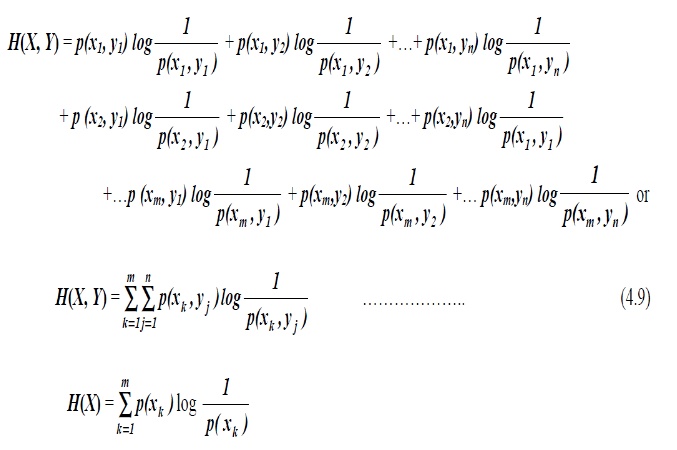
Taking the average of
the above entropy function for all admissible characters received, we have the
average ― conditional Entropy” or “Equivocation”:

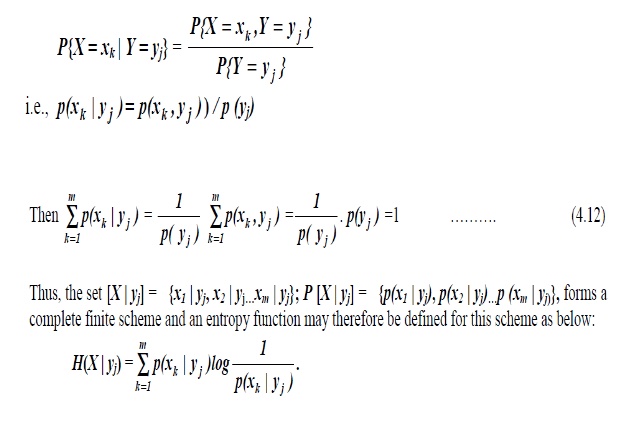

Observe that the manipulations, ' The entropy you want is simply the
double summation of joint probability multiplied by logarithm of the reciprocal
of the probability of interest‟ . For
example, if you want joint entropy, then the probability of interest
will be joint probability. If you want
source entropy, probability of interest will be the source probability. If you
want the equivocation or conditional entropy, H (X|Y) then probability of
interest will be the conditional probability p (xK |yj) and so on.
All the five entropies so defined are all inter-related. For example, We
have
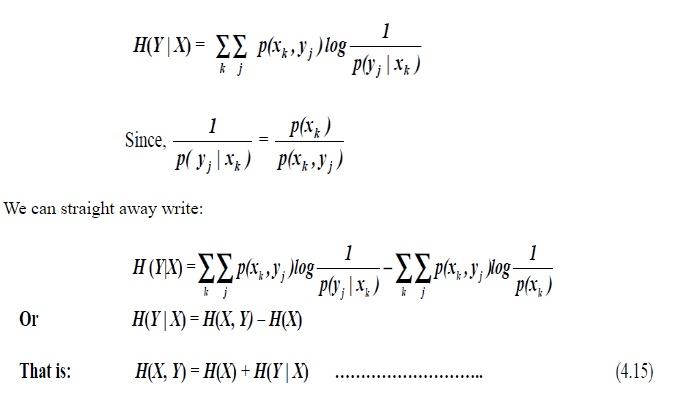
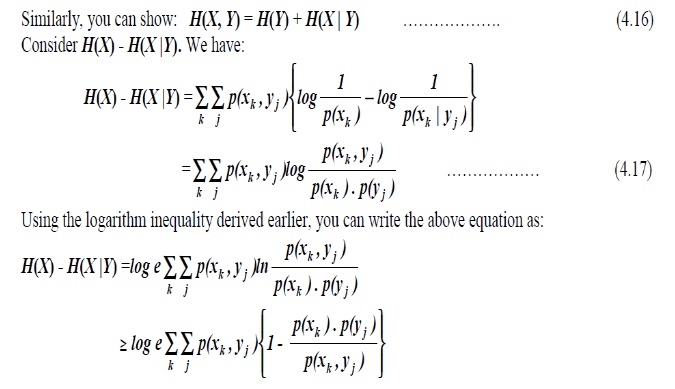
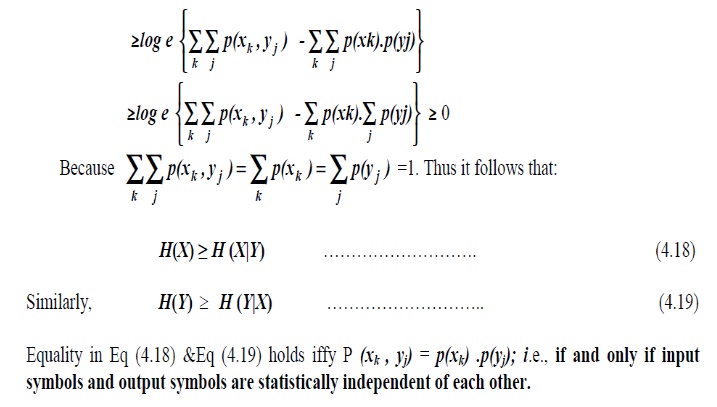
Binary Symmetric
Channels (BSC):
The channel is called a
'Binary Symmetric Channel‘ or ( BSC). It is one of the most common and widely
used channels. The channel diagram of a BSC is shown in Fig 3.4. Here 'p‘ is
called the error probability.
For this channel we
have:
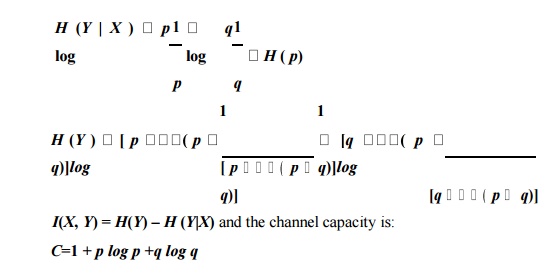
In this case it is
interesting to note that the equivocation, H (X|Y)
=H (Y|X).

An
interesting interpretation of the equivocation may be given if consider an
idealized communication system with the above symmetric channel.
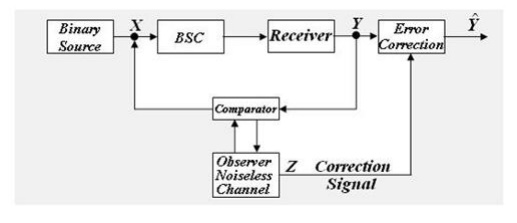
The observer is a
noiseless channel that compares the transmitted and the received symbols.
Whenever there is an error a ‗ 1‘ is sent to the receiver as a correction
signal and appropriate correction is
effected. When there is no error the observer transmits a '0‘ indicating no change. Thus the observer supplies
additional information to the receiver, thus compensating for the noise in the
channel. Let us compute this additional information .With P (X=0) = P (X=1) =
0.5, we have:
Probability of sending
a „1‟ = Probability of error in the channel .
Probability of error =
P (Y=1|X=0).P(X=0) + P
(Y=0|X=1).P(X=1) = p ×
0.5 +
p × 0.5 = p
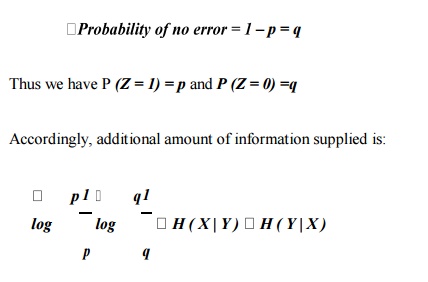
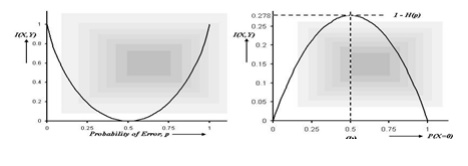
Binary Erasure Channels
(BEC):
BEC is
one of the important types of channels used in digital communications. Observe
that whenever an error occurs,y‘ theand symbolnodecisionwill be about the
information but an immediate request will be made for retransmission, rejecting
what have been received (ARQ
techniques), thus ensuring 100% correct data recovery. Notice that this channel also is a symmetric channel and we
have with P(X = 0) =

In this particular case, use of the equation I(X, Y) = H(Y) – H(Y | X) will not be correct, as H(Y) involves "y‘ and the information given by " y‘ is rejected at the receiver.
Related Topics